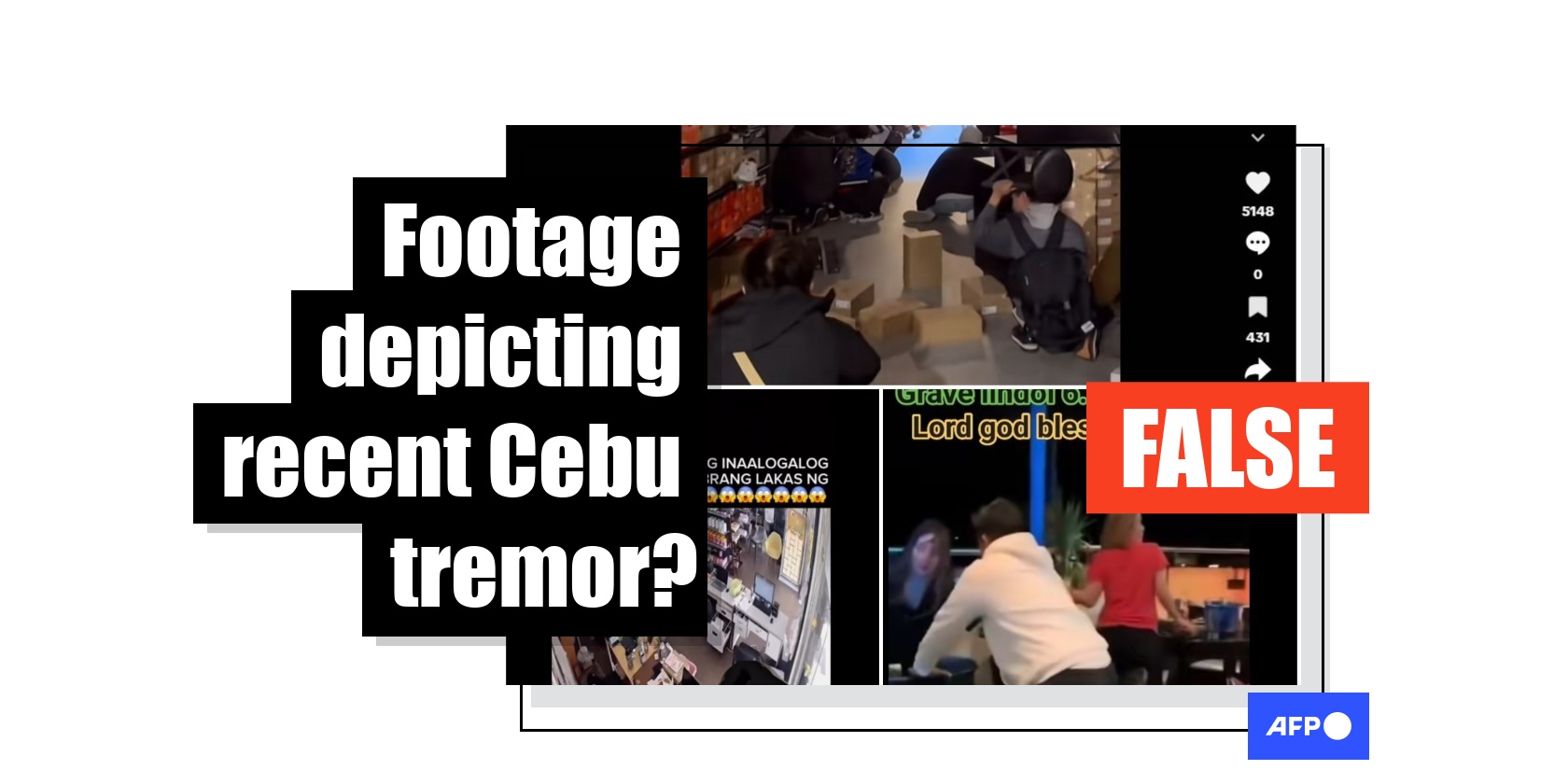
Old videos falsely shared as impact of deadly Philippines quake
- Published on October 2, 2025 at 09:08
- 4 min read
- By Jan Cuyco, AFP Philippines
"What a serious earthquake, 6.7 [magnitude] in Cebu / Lord god bless," says the Tagalog overlaid text on a Facebook video shared on September 30, 2025.
The video -- which racked up at least three million views -- shows tables and chairs suddenly trembling at a rooftop bar, sending customers scrambling for cover.
A magnitude-6.9 quake struck central Philippines' Cebu on late September 30, according to the US Geological Survey.
The death toll from the quake rose to at least 72 by Thursday, according to rescuers (archived link).
A separate TikTok video shared on the same day shows people in a retail store ducking for cover as the shelves swayed.
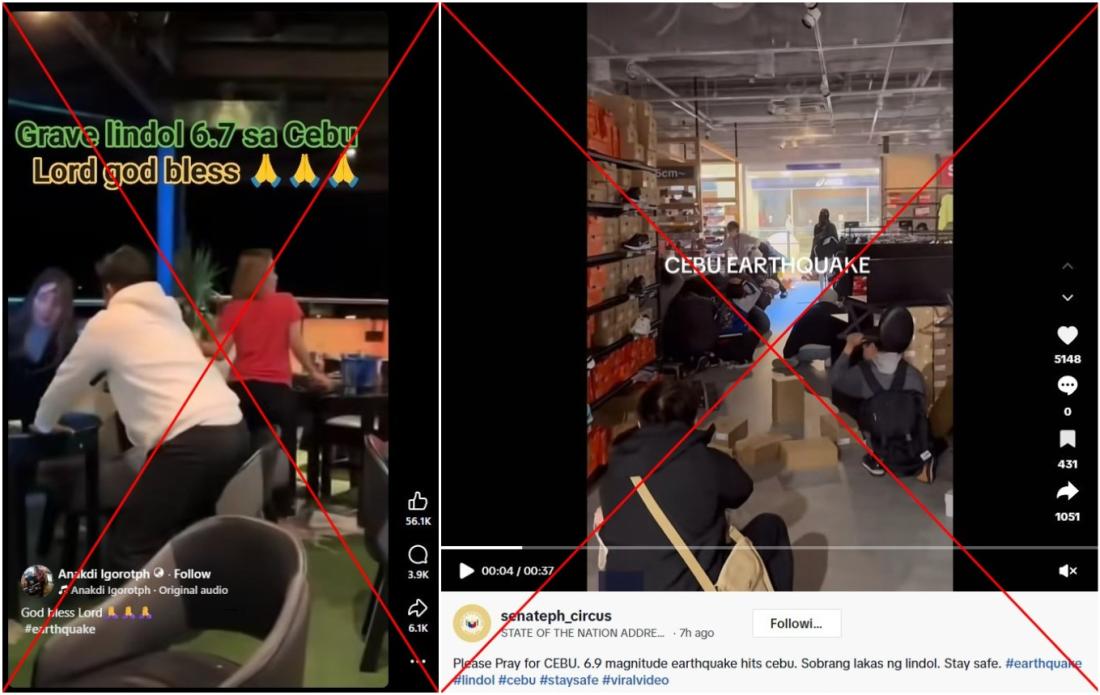
Another video circulating on October 1 showed CCTV footage of a store being rattled, with its caption falsely depicting it as the Cebu quake.
"[The store] looks like it's being shaken by the sheer force of the earthquake / Everything is destroyed," reads its sticker text in Tagalog.
"The earthquake's so strong, magnitude 6.9 in Cebu," its caption says.
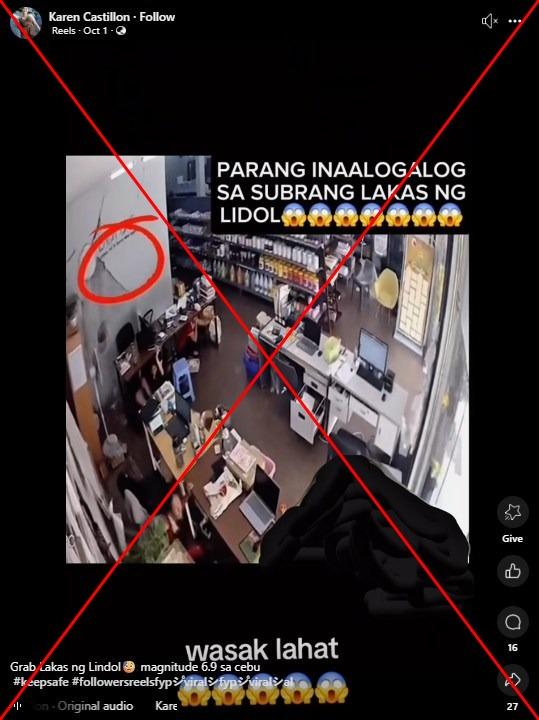
The videos also resurfaced in other social media posts alongside similar claims.
But none of the clips being shared actually depict the recent Philippines quake.
Mindanao 2023
A Google reverse image search of the first video's keyframe found that it was from a different earthquake that rocked the southern Philippines region of Mindanao two years ago.
Local media outlets CDN Digital and SunStar Davao published the same video on December 3, 2023 (archived here and here).
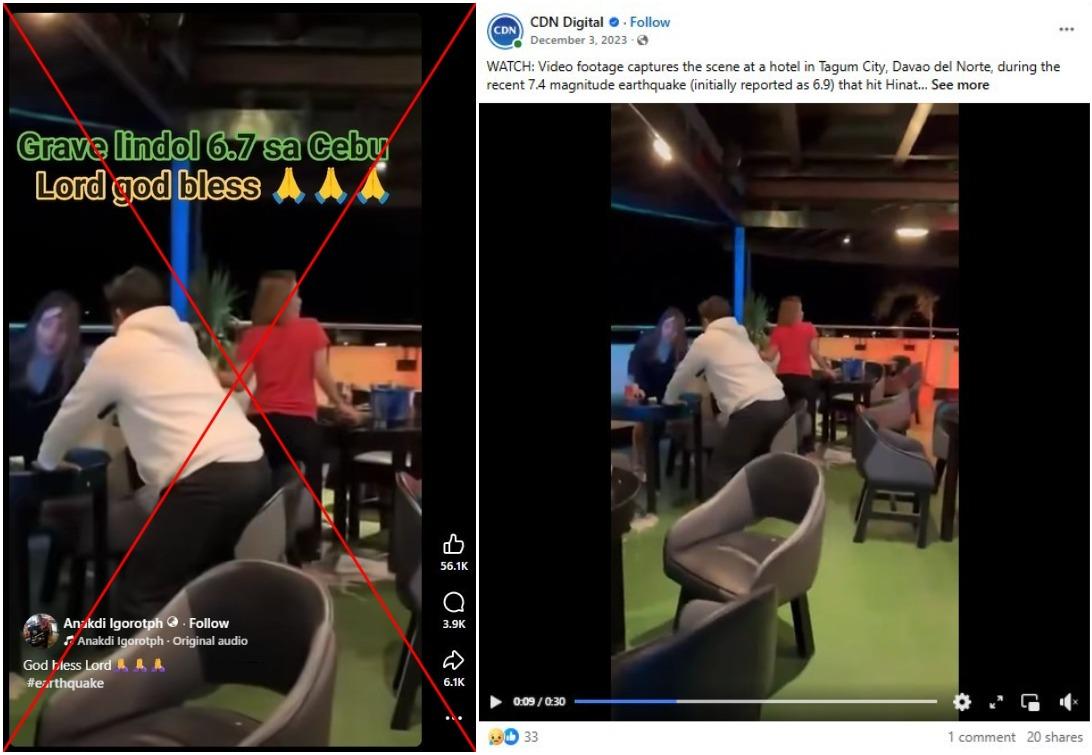
"Video footage captures the scene at a hotel in Tagum City, Davao del Norte, during the recent 7.4 magnitude earthquake (initially reported as 6.9) that hit Hinatuan, Surigao del Sur, and caused tremors in various areas of Visayas and Mindanao on December 2," says the caption of CDN Digital's Facebook post.
The falsely shared video was lifted from this 2023 video starting from its nine-second mark.
Japan 2024
The second video, meanwhile, actually shows the New Year's Day quake in Japan last year, based on a reverse image search on Google.
American news outfit ABC7LA published the clip on January 3, 2024 (archived link).
Its caption partly said: "Shoppers huddled together as a store shook in Oyabe, Japan, after a 7.5 magnitude earthquake hit."
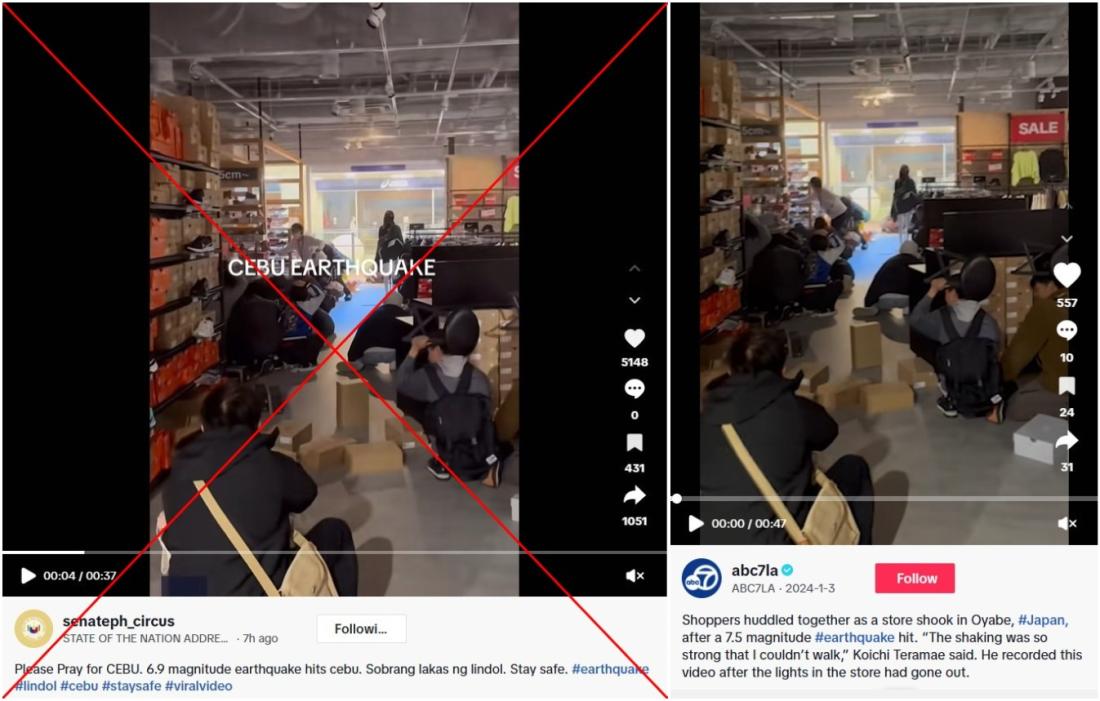
A longer version of this footage can also be found in the 2024 Noto Earthquake & Tsunami Archive YouTube channel (archived link).
On New Year's Day 2024, more than 400 people died after a massive earthquake hit the Noto Peninsula in central Japan, including "quake-linked" deaths as well as those killed directly in the disaster (archived link).
The January 1 quake and its aftershocks toppled buildings, caused fires and knocked out infrastructure at a time when families were celebrating the new year.
Myanmar 2025
Lastly, the security footage of the quake-stricken shop was taken in Myanmar, not the Philippines.
AFP earlier debunked this footage that was falsely shared as the Russian earthquake last July.
Reverse image searches found the clip corresponded to this TikTok video uploaded by beauty products wholesaler Ladybug on May 7, 2025 (archived link).
The Burmese-language caption says: "All the employees escaped safely during the first tremor, the building collapsed during the second one. For those asking if everyone is safe, thank you so much for your support."
The security footage's date stamp -- which has been covered in the false video -- also reads "2025-03-28" in the top-right corner.
In late March, a 7.7-magnitude earthquake hit northwest of the city of Sagaing in central Myanmar, which killed nearly 3,800 people (archived link).
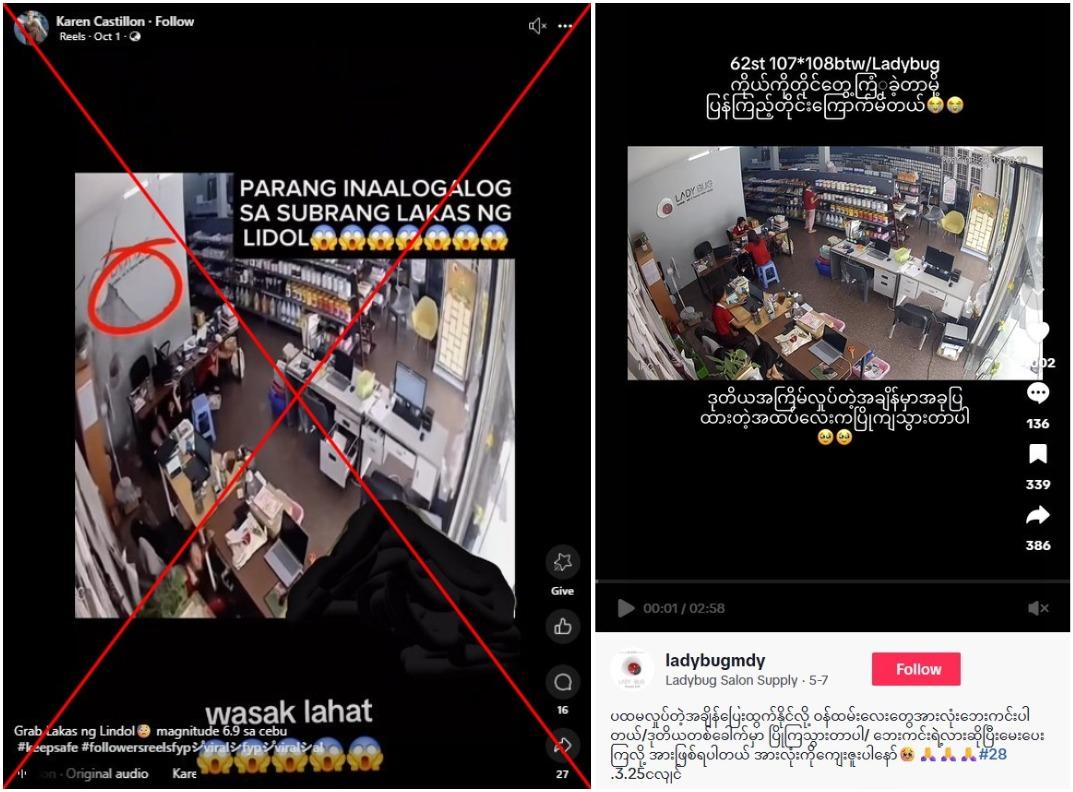
Ladybug's Facebook page also announced that its store collapsed on March 28 when the powerful quake struck (archived link).
Earthquakes are a near-daily occurrence in the Philippines, which is situated on the Pacific “Ring of Fire” -- an arc of intense seismic activity stretching from Japan through Southeast Asia and across the Pacific basin.
AFP has previously fact-checked other false claims related to earthquake activity in the Philippines.
Copyright © AFP 2017-2025. Any commercial use of this content requires a subscription. Click here to find out more.
Is there content that you would like AFP to fact-check? Get in touch.
Contact us
